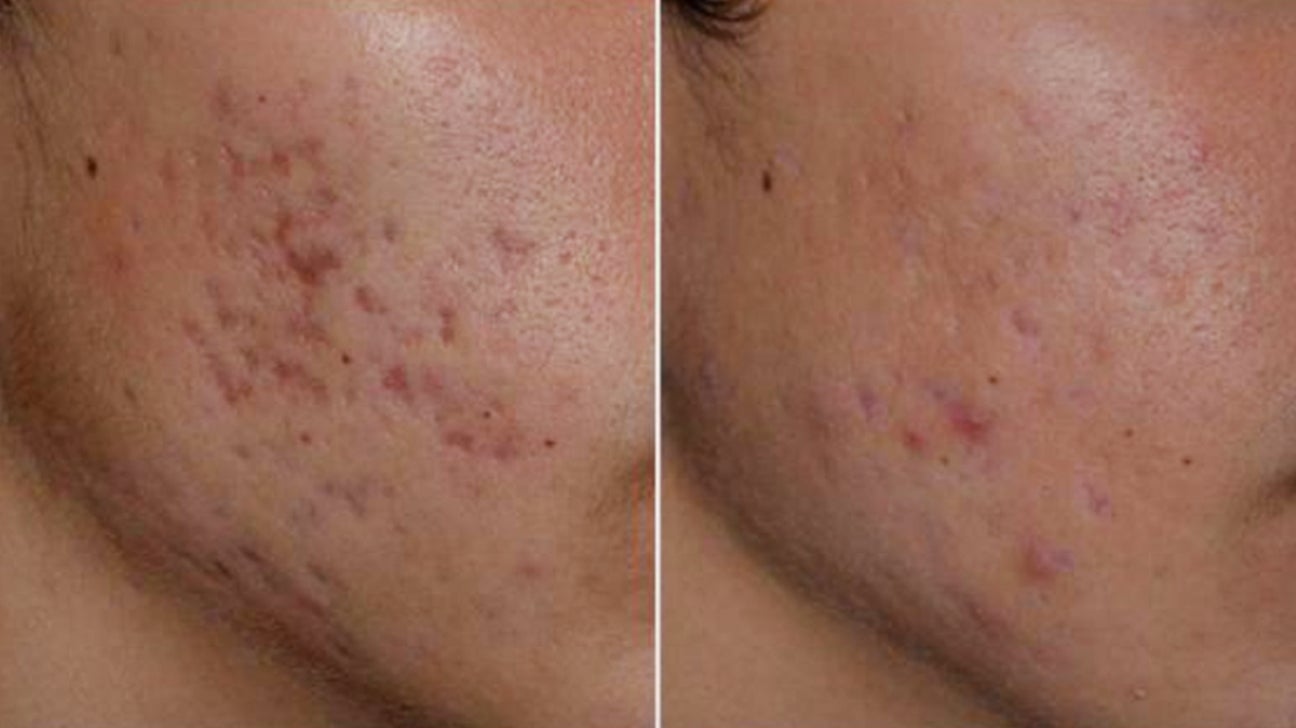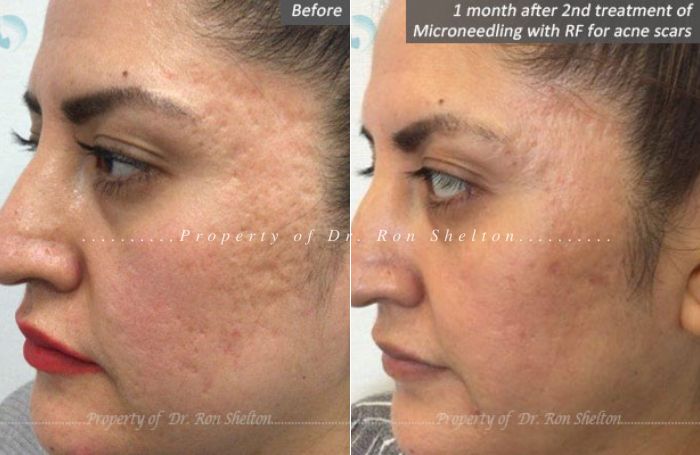Fascination About Acne Scars
Fascination About Acne Scars
Blog Article
The 8-Minute Rule for Acne Scars
Table of ContentsWhat Does Acne Scars Mean?The smart Trick of Acne Scars That Nobody is Talking AboutAcne Scars Fundamentals ExplainedWhat Does Acne Scars Mean?The Only Guide to Acne Scars
Raised acne scars take place when the body produces also much collagen and create a visible bump. As we age, acne scars end up being a lot more noticeably due to the fact that our skin loses collagen.A person delays treatment for inflammatory acne. The longer you wait to look for treatment for acne, the greater the danger of scarring. A person picks at, squeezes or stands out acne. When standing out a pimple, you push bacteria deeper into pore. If we really did not need another reason not to stand out an acne, know that a scar could be the straight outcome of your activities.
Your genetic makeup plays a huge function in just how much acne, and what kind of acne you may establish. As we said earlier, there is no magic active ingredient to take acne marks away in the blink of an eye. There are therapies readily available that help diminish the scarring over time.
, a skin doctor may lift the scar, bringing it closer to the surface area of the skin to make it less recognizable. Resurfacing eliminates layers of the skin, which permits the body to create new skin cells.
How Acne Scars can Save You Time, Stress, and Money.
best for all types of acne marks. Lasers and various other light therapies can treat raised marks securely and successfully. Therapy with a pulsed color laser (PDL) can help in reducing the impulse and discomfort, decrease shade, and squash a raised mark. For people with lighter skin, intense pulsed light (IPL) likewise may be a treatment alternative.
After 3 needling therapies, there was renovation in the look of acne marks over time contrasted with the control group, with minimal discomfort reported - acne scars. Treatment of acne scarring continues to be a restorative obstacle, with therapy techniques that include a range of possible alternatives.
Nonablative and ablative lasers can be made use of to either get rid of or bore skin in a fine pinpoint pattern, with resulting neocollagenesis; only a fraction of the skin is treated with each treatment, and a collection of therapies are required to deal with the entire affected surface. It has actually been suggested that neocollagenesis and enhancement of acne scars can additionally be attained using needle rollers, which use a mechanical, macroscopic technique to induce tiny epidermal and dermal perforations.
Acne Scars Things To Know Before You Buy
Like paint rollers, such gadgets can be returned and forth along the skin. Needling as a possible treatment for acne scarring was presented by Camirand and Doucet, who explained use a tattoo weapon to abrade acne marks. Fernandes,6 subsequently insisted that needling with a roller brought about percutaneous collagen induction.
At each of these brows through, needling was executed on the research study treatment location, and topical anesthetic was just massaged into the control area. Digital photos and adverse events (eg, infection, long term erythema, click over here long term edema, serosanguineous drainage, bleeding, ulceration, erosion, and pigmentation), including their period, resolution, strength, relationship to the study treatment, and any curative activities taken, were recorded prior to each therapy.

Pain degree was tape-recorded based upon a 10-point visual analog scale after the procedure. Quickly after each treatment, gentle hands-on pressure with gauze was made an application for 5 minutes to control identify bleeding and lotion secretion. The skin was soaked with saline swabs for an hour to promote hydration while the individuals were enlightened regarding the requirement for home care.
Fascination About Acne Scars
The gadget was then additional cleaned up by gas sanitation, saved in a shut bundle, and identified with the individual's name and the first therapy date on the box until the following therapy. This sterilization process was followed to make sure a high degree of infection control in this research setting. The key outcome step was the quantitative worldwide scarring grading system, created by Goodman and Baron.
Two blinded skin specialists (S.H. and M.P.) individually ranked individuals' acne marks based on common digital photographs gotten at baseline and at the 3-month and 6-month follow-up visits. Compelled arrangement was used to integrate rankings. Considered that this was a very early pilot test, we considered it ideal to take into consideration acne scars jointly, not individually, by numerous morphologic subtypes (eg, rolling, boxcar, ice choice, and so forth).
and M.P.) did not take part in randomization or therapy and for that reason had the ability to be blinded relating to assignment. Adjustments in mean mark ratings from baseline to 3 and 6 months, specifically, were computed for the therapy and control arms. Repeated-measures evaluation of difference with pairwise comparisons with Sidak adjustment were done to check whether the mark score varied on treatment type, time, or the communication between the 2.
The Wilcoxon authorized rank test was utilized to examine whether the distinction in overall acne mark appearance was related to therapy type. The research took area from November 30, 2009, via July 27, 2010. Twenty people consented, and 5 dropped out before the first treatment. The staying 15 completed all treatments and are examined.
The 3-Minute Rule for Acne Scars
At 3 months compared to standard, the decrease in scar rating in the needling team was nonsignificant (mean distinction, 2.4, 95% CI, 0.01 to 4.8; P =.052) (Number 3). The needling procedure was not particularly agonizing. The mean discomfort rating was 1.08 of 10. Pain scores increased somewhat gradually (P =.01), with week 4 discomfort rankings (mean, 1.75; 95% CI, 0.90-2.60) substantially more than week 2 (mean, 0.78; 95% CI, 0.40-1.20) and week 0 (mean, 0.71; 95% CI, 0.40-1.00).
When asked to approximate the pain experienced during and in the days after their treatment, participants commonly reported no pain (acne scars). A lot of individuals were really satisfied with their procedure, responded of course when asked if they would certainly do this treatment again to official source treat additional scars, and stated they would advise needling to their buddies
Moderate short-term erythema and edema, which were not identified as damaging events and hence not officially tracked, were regularly observed by the investigator (M.A.) and reported by individuals after treatments. This study reveals some improvement in acne scars after a series of 3 treatments of needling. There is a statistically considerable enhancement in such marks in the treatment group from standard to 6 months and no significant improvement throughout this duration in the control team.

Report this page